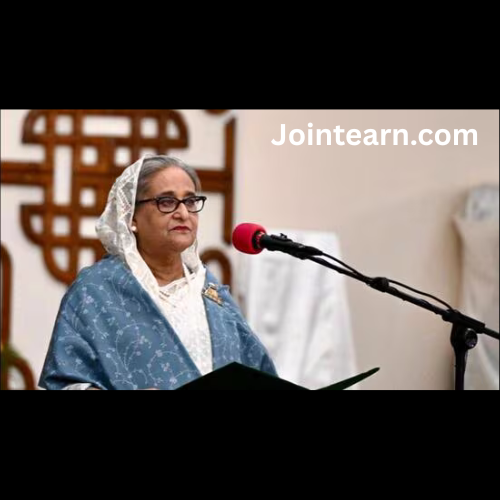Itanagar | November 13, 2025 — Arunachal Pradesh Governor Lt Gen K T Parnaik has called for a deeper and more sustained partnership between Arunachal Pradesh and Gujarat, highlighting the historical, cultural, and developmental ties that unite the two states and urging collaborative efforts to further national unity and collective progress. Speaking at the ‘Bharat Parv’ event held at the Statue of Unity in Ekta Nagar, Gujarat, on Wednesday, the governor outlined the longstanding connections that bridge the northeastern and western regions of India, emphasizing that these ties have evolved over centuries and continue to shape civic engagement, youth initiatives, and state-led development programs today.
Parnaik underlined that the relationship between Arunachal Pradesh and Gujarat rests on centuries-old cultural foundations, which continue to inspire generations of young people in both regions. According to the governor, these cultural connections are not merely symbolic but actively influence educational and social initiatives across both states. In particular, he highlighted the enduring significance of shared mythology and cultural practices, drawing attention to the story of Lord Krishna and Rukmini, whose divine union is commemorated annually at the Madhavpur Fair in Gujarat. The governor noted that this story is more than a cultural legend—it is a “living cultural bridge” connecting the two states, as Rukmini is traditionally believed to have been born in Bismaknagar, located in Arunachal Pradesh’s Lower Dibang Valley district. This ancient connection, Parnaik suggested, predates contemporary political structures and continues to resonate in modern cultural and civic exchanges.
In his address, the governor also acknowledged the significant role of youth and civic programs in sustaining these ties, particularly during occasions such as Rashtriya Ekta Diwas (National Unity Day). On these occasions, educational institutions across Arunachal Pradesh honor the legacy of Sardar Vallabhbhai Patel, whose efforts in integrating princely states and strengthening India’s unity are celebrated nationwide. Parnaik highlighted that Patel’s vision for national integration, alongside the decisive actions of Major Bob Khating—who played a pivotal role in ensuring that Tawang remained an integral part of India—continues to guide Arunachal Pradesh’s strong sense of national identity. He emphasized that the historical, cultural, and civic linkages between Arunachal Pradesh and Gujarat exemplify the broader vision of ‘Ek Bharat Shreshtha Bharat’, India’s initiative to promote unity through inter-state cooperation and cultural exchange.
Governor Parnaik further appreciated the contributions of the Gujarati community in Arunachal Pradesh, noting that they have played an active role in fostering development and cultural cohesion. Their engagement, he stated, has been instrumental in advancing educational, civic, and social initiatives, reflecting the ideals of a unified and forward-looking nation. The governor stressed that Gujarat’s active participation in Arunachal Pradesh’s civic and youth programs strengthens both states’ social and developmental agendas while reinforcing the broader framework of national unity.
Turning to Arunachal Pradesh’s developmental achievements, Parnaik highlighted the state’s progress in infrastructure, connectivity, and tourism. He noted that the state has successfully constructed over 4,000 km of roads in the last five years, despite the challenging mountainous terrain, which has significantly improved mobility, connectivity, and strategic security across the region. These developments, the governor said, have enhanced the state’s economic prospects, allowing greater access to remote areas and facilitating trade, education, and healthcare delivery.
The governor also drew attention to Arunachal Pradesh’s tourism potential, describing it as a state rich in spiritual, cultural, adventure, and eco-tourism opportunities. Its pristine landscapes, diverse ecosystems, and vibrant indigenous heritage, Parnaik said, provide a solid foundation for attracting domestic and international tourists, while promoting sustainable development and cultural preservation. By highlighting these strengths, the governor emphasized that Arunachal Pradesh is poised to leverage its natural and cultural assets to complement developmental models pioneered by other states, including Gujarat.
In discussing opportunities for mutually beneficial cooperation, Parnaik cited several sectors in which Gujarat’s expertise could support Arunachal Pradesh’s growth. These include cooperative development, dairy management, horticulture, and tourism, areas in which Gujarat has achieved national recognition for innovation and efficiency. The governor suggested that adopting best practices from Gujarat could enhance Arunachal Pradesh’s economic development and strengthen its social and institutional frameworks.
Conversely, Parnaik underscored Arunachal Pradesh’s own unique contributions to the national economy, noting that the state is India’s largest producer of kiwi fruit and a growing center for mandarin oranges and large cardamom. He also highlighted the state’s vast hydropower potential, which positions it as a key partner in India’s pursuit of clean and renewable energy goals. By combining Gujarat’s experience in developmental management with Arunachal Pradesh’s natural resources and agricultural potential, Parnaik argued, the two states could forge a synergistic partnership that benefits both regions while contributing to the broader national interest.
The governor stressed that such collaborations go beyond economic considerations; they also serve to strengthen the national fabric and reinforce India’s unity. He called for deeper engagement at both the governmental and societal levels, urging Gujarat’s chief minister, ministers, and officials to visit Arunachal Pradesh to explore partnership opportunities firsthand. These exchanges, he noted, would facilitate knowledge sharing, technical cooperation, and cultural understanding, helping both states to advance their shared vision of a cohesive, forward-moving India.
Parnaik also noted that fostering inter-state partnerships aligns with broader national development and integration objectives, supporting initiatives that seek to bridge geographical, cultural, and economic divides within the country. By learning from each other’s experiences and resources, the governor argued, Arunachal Pradesh and Gujarat can set an example for other states, demonstrating how collaborative governance and cultural exchange contribute to national strength and prosperity.
In conclusion, Governor Parnaik reiterated the importance of maintaining and enhancing the ties between Arunachal Pradesh and Gujarat, emphasizing that the relationship is rooted in historical connections, shared culture, and mutual development goals. He highlighted that continued cooperation between the states would not only advance regional development but also fortify India’s unity, resilience, and inclusive progress. By building on centuries-old cultural bridges and leveraging modern developmental strategies, the governor said, both states can contribute to a stronger, more cohesive, and prosperous India.
Governor Parnaik’s address at the Bharat Parv event thus underscored a vision of partnership that spans culture, development, and national unity, urging both Arunachal Pradesh and Gujarat to take proactive steps in translating shared history and mutual potential into tangible developmental outcomes. Through such cooperation, he affirmed, India’s diverse regions can come together to achieve collective prosperity and sustained national integration, embodying the ideals of ‘Ek Bharat Shreshtha Bharat’ in a practical and forward-looking manner.


Leave a Reply